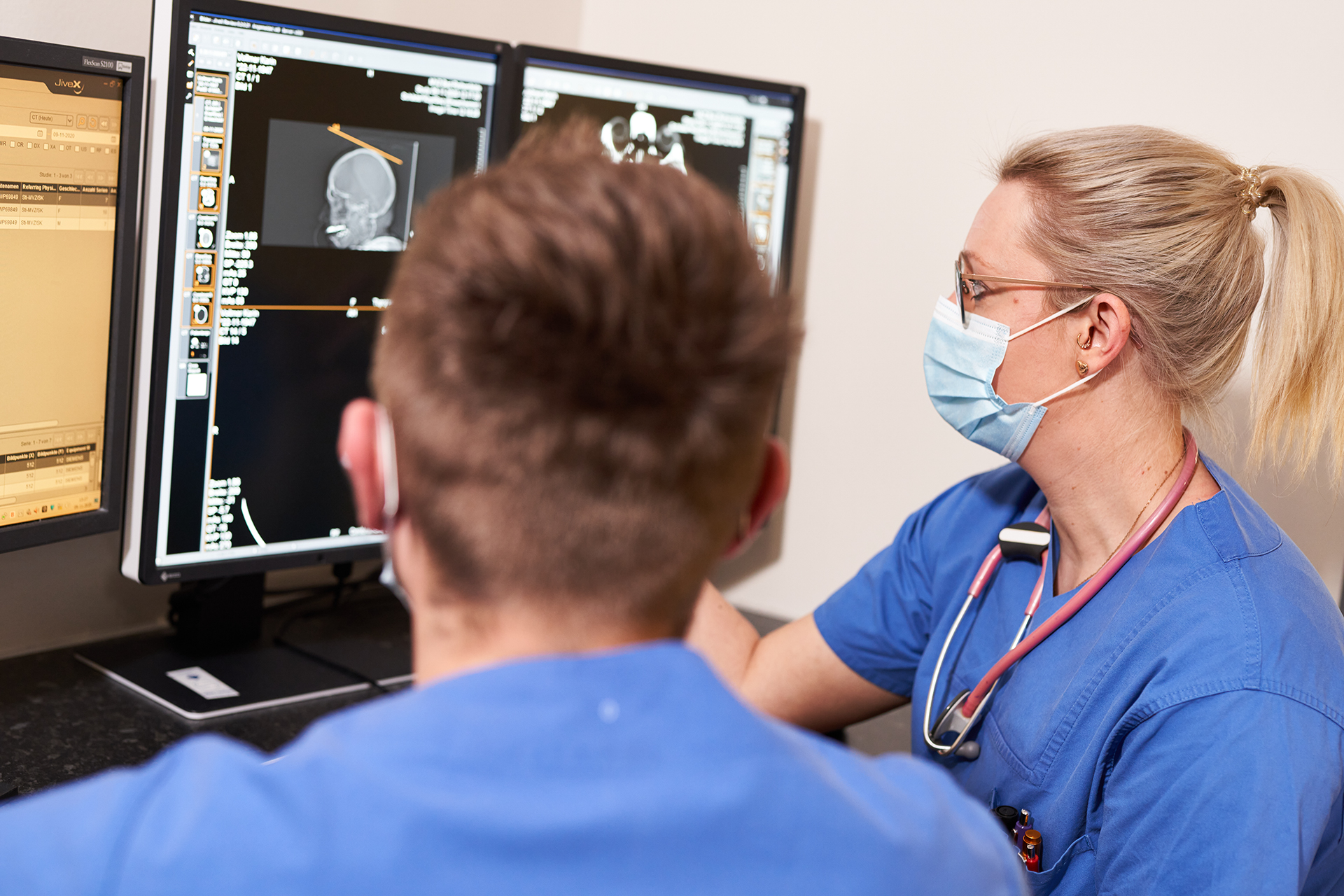ANAESTHETIC PROCEDURES
A general anaesthetic is an artificially induced state of unconsciousness and painlessness. The type of general anaesthesia most frequently used at the Schüchtermann-Klinik is the“total intravenous anaesthesia”(TIVA). This involves the use of a combination of selected and individually dosed medicines that are given intravenously. They consist of a hypnotic, an analgesic and a muscle relaxant. In special cases, this type of general anaesthesia is supplemented by modern anaesthetic gases that are inhaled via an anaesthesia system.
BEFORE AN ANAESTHETIC
Anaesthetic planning begins on the day of admission with the anaesthetist’s pre-medication visit. After reviewing all of the relevant findings, a physical examination and a chat with the patient, the anaesthetist determines the best anaesthetic procedure for the individual. The patient must consent to the anaesthetic and sign the appropriate forms. For the evening before the operation and for the day of the operation, the anaesthetist prescribes preparatory medication. This so-called pre-medication relaxes the patient and induces a pleasant drowsiness.
On arrival in the induction room, we apply several electrodes and sensors to first monitor, for example, heartbeat and breathing. Two small catheters are then placed in the patient’s arm under local anaesthetic. A catheter placed in a vein of the forearm is used to infuse medicines and fluids. The other small catheter, which is placed in an artery at the wrist, continuously measures the blood pressure.
DURING AN ANAESTHETIC
The hypnotic agent administered at the beginning of the anaesthetic takes effect after only 15 to 30 seconds and allows the patient to fall asleep quickly and comfortably. The anaesthetist then supports the patient’s breathing with the help of a ventilation mask. Once the patient is sound asleep, the airway is secured by inserting a tube (tracheal tube) into the windpipe (intubation) or into the throat (laryngeal mask). During anaesthesia, artificial respiration is administered to the patient through these tubes.
Afterwards, the anaesthetist carries out further measures to ensure comprehensive monitoring and safety. These include, for example, inserting a catheter into a vein near the heart. Subsequently, an indwelling bladder catheter and a temperature probe are placed, as well as a stomach tube if necessary. To monitor brain functions, the anaesthetic team attaches additional special adhesive sensors to the patient’s head immediately before the operation begins, and these measure brain activity (EEG) and oxygen saturations in the brain.





